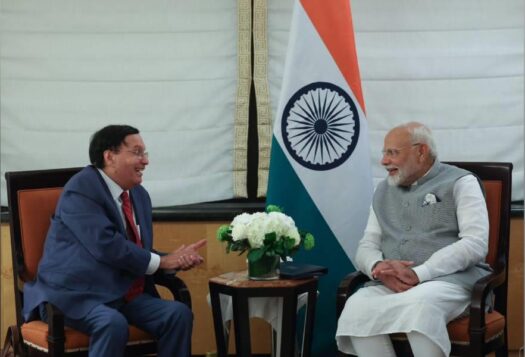
The indefinite extension of the NPT in 1995 represents the strong will of the majority of signatory states to work on creating a non-proliferation regime that makes the cost of non-compliance high enough to deter potential violators. The NPT has been the most adhered to arms control arrangement up until recently. Signatories recently met at the 2015 NPT Review Conference (RevCon) to strengthen the non-proliferation regime, but could not come to an agreement. The question of why the 2015 RevCon could not produce a workable, concrete document for the adherence to the nuclear non-proliferation regime will be taken into account in this op-ed.
Andrey Baklitskiy offers some perspective on the NPT RevCon’s failure to produce any final document in his article titled “The 2015 NPT Review Conference and the Future of the Nonproliferation Regime.” First, Baklitskiy notes, concluding the NPT RevCon without an agreement is not unusual – in fact, parties have failed to reach a multilateral consensus at four of the nine RevCons since 1970, in 1980, 1990, 2005, and 2015.
But, in my view, this is a poor record for a treaty that is considered to be universal. On the other hand, even though the implementation is still debatable, the 2000 and 2010 review conferences were considered to be successful as they agreed on two concrete documents: 13 practical steps and the 64-point action plan in 2000 and 2010 respectively.
Second, Baklitskiy argues, “the main contradictions plaguing the review conferences have not changed much since 1985,” even though the world order has. Disarmament – Article IV – has remained the most contested issue at RevCons.
Finally, he claims that “the nonproliferation regime [has managed] to stay relatively intact” despite previous standoffs between the United States and Russia and current “frosty” relations. He notes, however, that while Russia and the United States criticized each other over suspected noncompliance with international agreements, they are still implementing the New Strategic Arms Reduction Treaty and the Intermediate-Range Nuclear Forces Treaty and continue to work together in the P5 process.
Russia has apprehensions regarding proposals to limit nuclear arsenals to 1,000 warheads, and views U.S. developments in ballistic missile defense and prompt global strike as undermining strategic stability. Moscow, being too critical, views this global missile defense system as a security threat. Even the members of the SCO believed national security should not be achieved at the expense of the security of other states as “the unilateral and unlimited capacity of individual states’ or groups of states’ missile defense systems will be detrimental to international security and strategic stability.”
Looking towards alternative arrangements
Lack of consensus at the NPT review conference is hardly new, but the willingness to cooperate or reconcile differences and find consensus is fading. As a result, states that cannot find satisfaction from this forum are beginning to look towards other alternatives to fulfill their disarmament and non-proliferation demands. Living with the continuing enmity among Moscow and Washington, in order to initiate the disarmament talks again – whether bilateral or multilateral – one will need to approach it through new inter-governmental dynamics or through creative diplomacy.
In addition, there have been suggestions to shift non-proliferation discussions to a forum that makes decisions by majority instead of consensus, such as the United Nation General Assembly or another ad hoc body. For example, in the discussions of a Middle East NWFZ, the proposal to shift the non-proliferation debate to the UNGA (which would tilt the balance in favor of the Arab case). Additionally, the Humanitarian Initiative proposes a legal framework to ensure full and concrete commitment towards disarmament and the elimination of nuclear weapons. A 2015 UNIDIR paper notes that “the purpose of reframing the nuclear disarmament debate in humanitarian terms is not to replace or side-line the NPT but to realize the commitment to nuclear disarmament set out in the treaty’s Article VI by moving beyond entrenched divisions in NPT politics.” The Initiative did not make forward progress at the 2015 RevCon, however, due to opposition from nuclear-weapon states.
Leaving the outcome aside as to whether shifting non-proliferation discussions to a majority-based forum would result in the desired changes or not, it would definitely weaken the NPT review process and consequently the nonproliferation regime itself. This is because of the fact that if any kind of shift were made, the confidence of international community especially those who surrendered their nuclear weapons would be shattered.
Despite any short-comings of the 2015 RevCon, no other nuclear disarmament arrangement has made substantial progress in restraining the proliferation of nuclear weapons. As the NPT is the foundational element or linchpin of the international non-proliferation regime, its sustainability is essential to upholding nonproliferation efforts. The emphasis should be on establishing common grounds for every state, no matter strong or weak, to achieve the ultimate aims of non-proliferation efforts. Nonetheless, progress over the next five years and at the next NPT RevCon will be crucial for the permanence of this vital piece of international law.
***
Image: Timothy A. Clary-AFP, Getty


